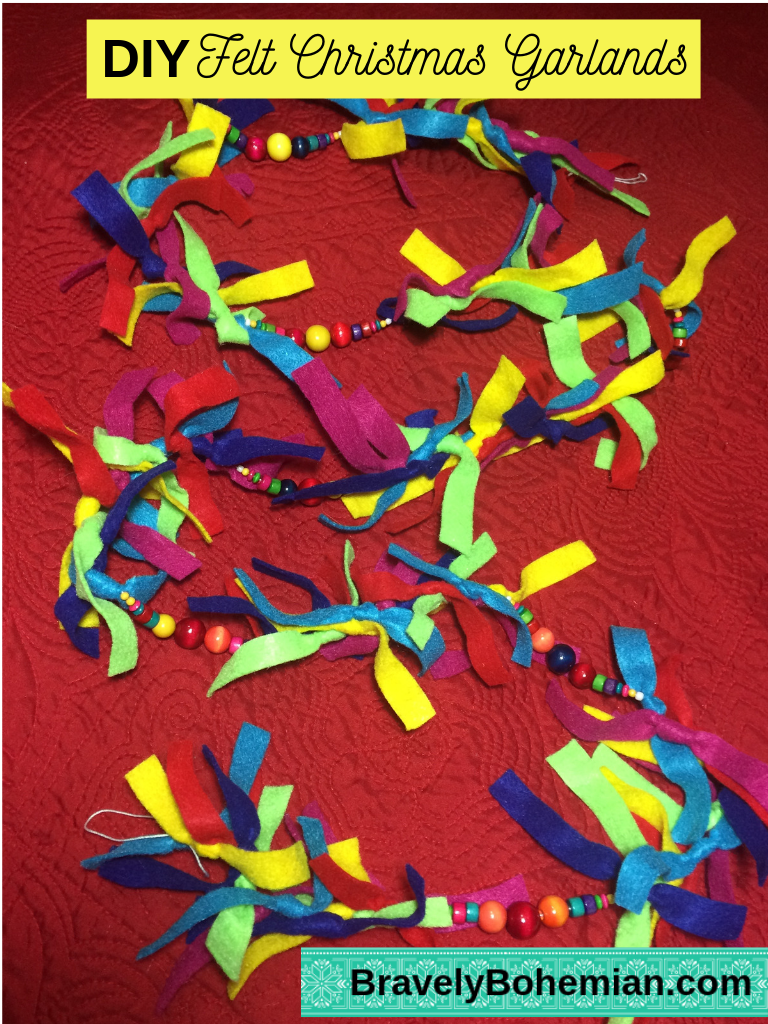After recently making 36 feet of festive felt garlands for our boho Christmas tree, I found myself thinking about other Holiday projects I could make out of felt. Check out these easy-to-make felt mandala ornaments.

I love these felt mandala ornaments because they are bright, simple and have fun tassels made of crochet thread.
Supplies:
*Precut felt flower mandalas in various colors (mine are from Studio g) OR thin craft felt squares, Sizzix machine and a simple mandala cutting die
*Indian shisha mirrors
*Mini gems
*Embroidery or crochet thread in various colors
*Clear fabric glue
*Cardboard scrap
*Needle
*Scissors

Directions:
1. Prepare your felt mandalas by deciding how you want to decorate them. My mandalas were purchased at the craft store precut. However, you can also make your own with the use of a Sizzix machine and a simple scrapbooking cutting die. Lightweight felt seems to work best. Also, make sure to select a simple mandala pattern for your cutting die. Dies with a lot of intricacies can cause some frustration, so be sure to experiment with your machine and cutting die on scrap felt first.
2. Stitch an Indian shisha mirror to the center of each of your felt mandala ornaments. Shisha mirrors can be affordably purchased on Amazon, eBay or on Etsy.
3. Attach the mini gems as you see fit to highlight the edges of a felt mandalas. You can use the sticker backed mini gems from the scrapbooking aisle of your craft store. However, these may not hold up for the long run. Instead, you may want to use clear fabric glue to glue on the gemstones.

4. Use colorful embroidery or crochet thread and a scrap of cardboard to make tassels. Directions on how to make the tassels can be found here. My tassels came out about 4 ½ inches each when completed. Or you can buy pre-made tassels.
5. String a thread through the top of each tassel. Stitch the tassel to the felt mandala ornament. Trim the excess threads.
6. Take an additional piece of thread and stitch through the top of each of your mandalas. Create a loop and then tie the ends several times. This will be used to hang the ornament on your Christmas tree.
And that’s it! Enjoy your beautiful felt mandala Christmas ornaments.
Happy boho crafting! Click for the next article in our boho Christmas series where we’ll make Bohemian Feather Ornaments.


















